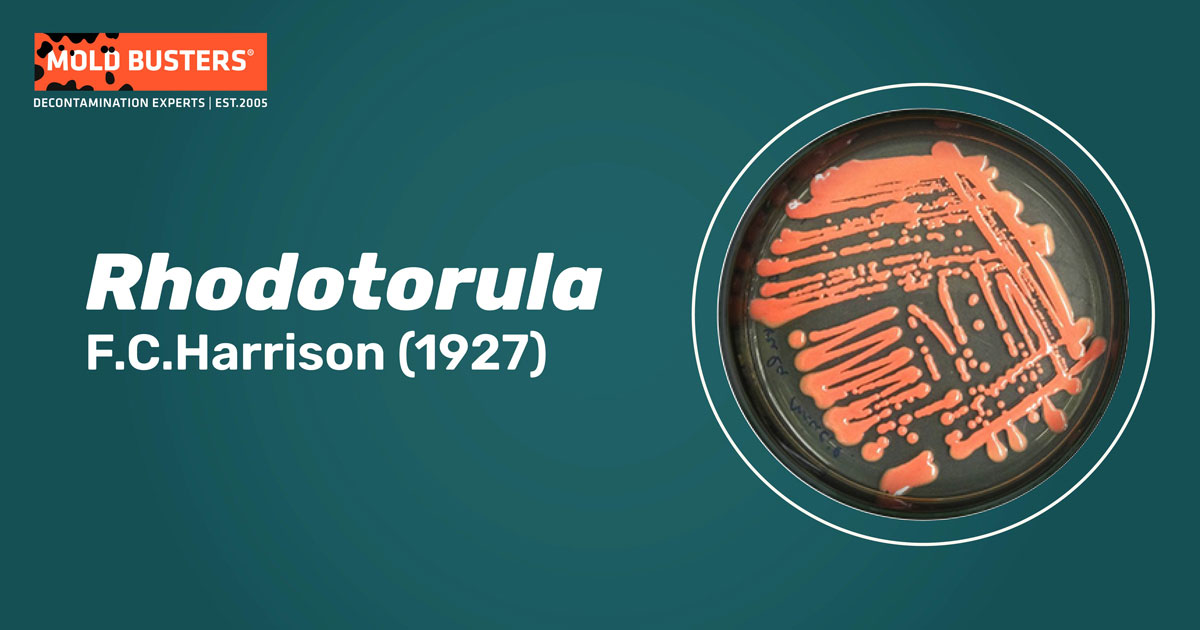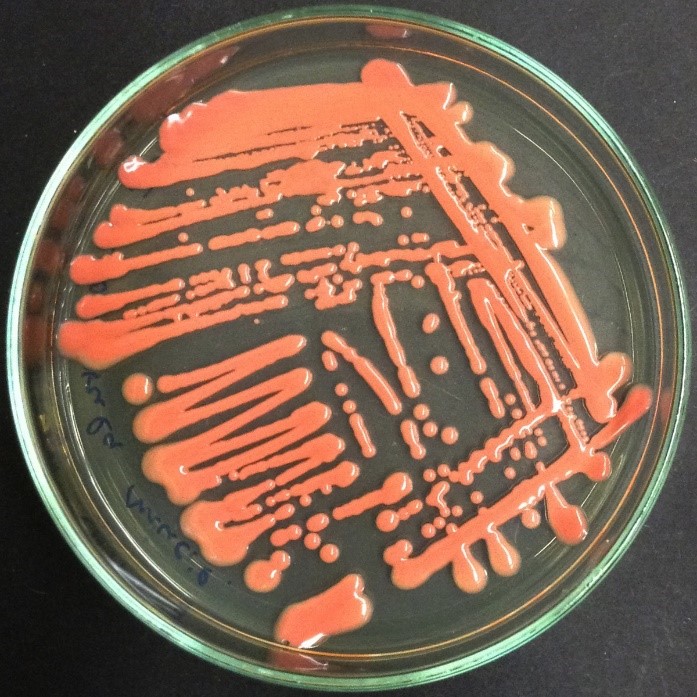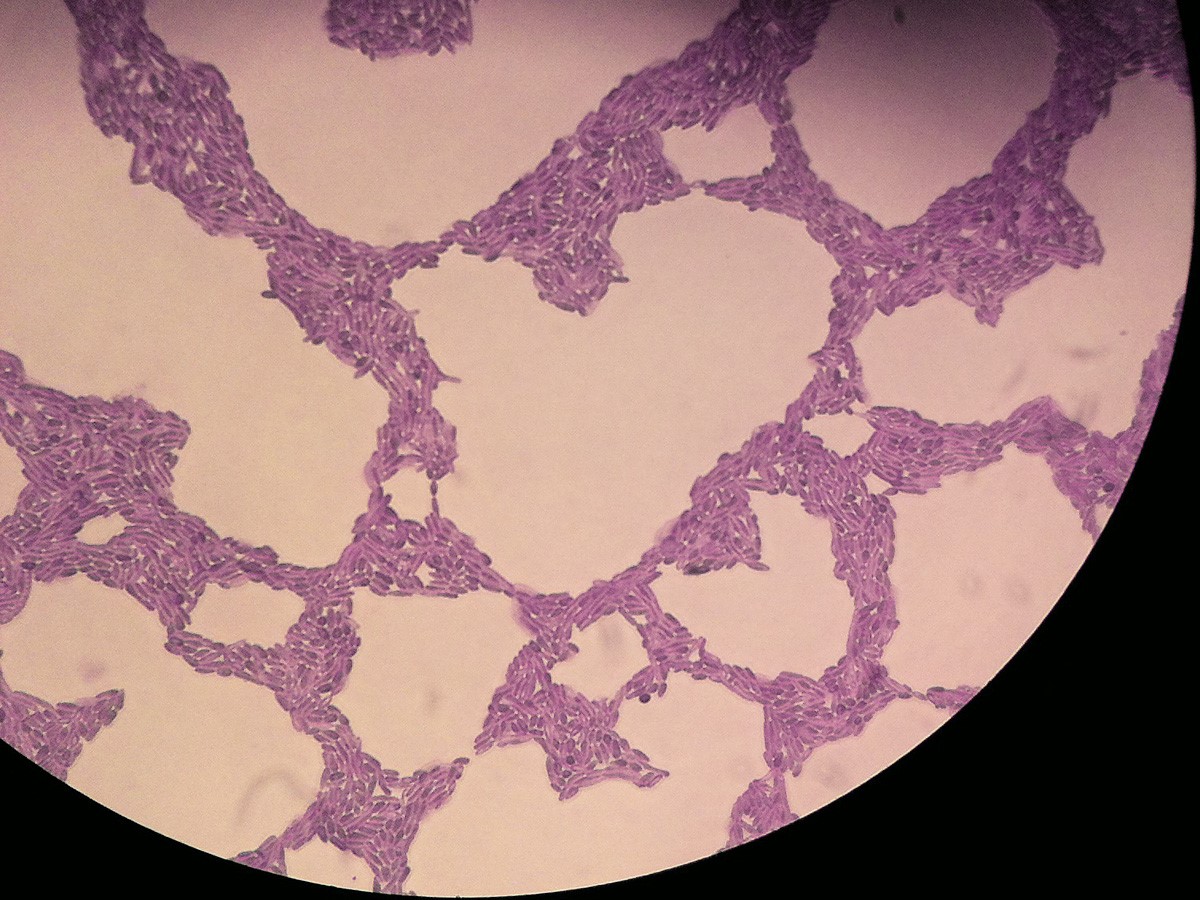F.C.Harrison (1927)
What is Rhodotorula mold?
The fungi of the genus Rhodotorula are environmental yeasts that belong to the phylum Basidiomycota. They colonize plants, mammals, and humans causing fungemia and eye infections in immunocompromised individuals, as well as other serious health issues, such as meningitis, peritonitis, onychomycosis, and prosthetic joint infections (1-5).

These fungi are widespread and inhabit many different environments. They have been found in the air, soil, and aquatic ecosystems. Furthermore, food items such as milk, different fruits, cheese, and sausages were found to contain these yeasts.
Being frequent contaminants, Rhodotorula species have been isolated from the hands of healthcare workers, as well as from human skin, nails, urine, sputum, and feces. Although such a broad presence in the human body indicates that these fungi might be a part of the human microbiome, Rhodotorula spp. is generally identified as opportunistic human pathogens and are primarily linked to nosocomial (hospital) infections of immunocompromised patients. They can form biofilm on plastic surfaces (an aggregation in which cells stick to each other and a surface), such as bathtubs and bathtub curtains, plastic tubes, and various medical equipment, which provides an important link to its role in nosocomial infections (2, 3, 5).
How many Rhodotorula species exist?
The information about the precise number of species greatly varies in different sources, especially since new species are identified regularly. However, the most important species, which are most commonly linked to human infections, are Rhodotorula mucilaginosa, R. glutinis and R. minuta. R. mucilaginosa is the species most associated with hospital infections (Fig. 1). R. glutinis and R. minuta are more often found in nature, although there are known cases of nosocomial infections by these fungi as well. (2–4).

Rhodotorula spp. form colonies that are pink, coral, or red, due to the presence of carotenoids, pigments that give plants, bacteria, and fungi the characteristic orange or red color. The purpose of these pigments is likely cell protection. In terms of texture, the colonies can be smooth, moist, or slimy, while the shape is usually spherical or slightly elongated (Fig. 2) (1, 5).

What is Rhodotorula infection and its symptoms?
Rhodotorula species are known to cause hospital infections. These infections are in most cases linked to the use of central venous catheters (CVCs) in immunocompromised patients, often the result of cancer, AIDS, congenital heart disease, as well as organ transplant patients. In very rare occurrences, healthy individuals may also develop localized infections (2 – 5).
Rhodotorula spp. infections lead to a number of secondary, opportunistic infections, the most common being fungemia (presence of fungal cells in the blood). Due to a weakened immune system, fungemia can lead to a plethora of different symptoms. It can manifest as a systemic infection with fever, chills, and sepsis, or lead to localized infections, which affect a single organ instead of the whole body. Localized infections include eye infections and onychomycosis, the infection of nails, which causes discoloration and separation of nails from the nail bed (2, 3).
Rhodotorula spp. infection can cause some serious conditions, like meningitis, the inflammation of thin membranes that cover and protect the brain and spinal cord. Symptoms of meningitis include fever, confusion, vomiting, cold hands and feet, and skin rashes. If not treated in time, meningitis can cause grave, permanent damage to the brain (2–4, 6). This fungus can also cause peritonitis, the inflammation of tissues that line the stomach and abdomen (2–4). The main symptoms are intense stomach pain, vomiting, high temperature, thirst, and retention of fluid in the belly. With both meningitis and peritonitis, it is important to seek medical help right away, as the patients’ health condition can deteriorate rapidly, and if untreated, may even lead to death (6, 7).
Early diagnosis is key with Rhodotorula spp. infections. In most cases, the removal of central venous catheters (CVCs) and an antifungal drugs treatment were enough for patients to recover from the infection. Amphotericin B was the most commonly used treatment (2, 5).
The industrial and biotechnological importance of Rhodotorula
Despite their status as emerging opportunistic human pathogens, scientists have found an application for Rhodotorula species in the industry and biotechnology. These fungi, especially R. glutinis, produce a large number of carotenoids, a group of pigments that have a wide range of roles in living organisms. These pigments are naturally synthesized in plants and some species of bacteria and fungi. For these organisms, carotenoids play a role in photosynthesis and also act as antioxidants and as precursors for the synthesis of vitamin A. They also provide these organisms with a red or orange color (8, 9).
Animals and humans can’t create these pigments, so our main source of carotenoids is food and nutritional supplements. For mammals, carotenoids help improve the immune system, act as antioxidants and as precursors for vitamin A synthesis, and help protect cells from oxygen radicals or reactive oxygen species (ROS). Research has shown that they may even help prevent illnesses like arteriosclerosis, multiple sclerosis, and cancer. So far, carotenoids have mostly been isolated from plants. They are commercially sold as food colorings and nutritional supplements. With increased research about the benefits these pigments may have for human health, the need for their synthesis and commercialization has increased. Microbial production of carotenoids is slowly becoming superior to extraction from vegetables due to the low cost of microbial cultivation. Additionally, Rhodotorula spp. have also shown potential in the production of lipids, fatty acids, and oil (8, 9).

Did you know?
The #1 toxic mold type found in homes is the Penicillium/Aspergillus mold group?! Find out more exciting mold stats and facts inside our mold statistics page.
References
- Walsh, T. J., Hayden, R. T., & Larone, D. H. (2018). Larone’s Medically Important Fungi: A Guide to Identification. John Wiley & Sons.
- Wirth, F., & Goldani, L. Z. (2012). Epidemiology of Rhodotorula: an emerging pathogen. Interdisciplinary perspectives on infectious diseases, 2012.
- Nunes, J. M., Bizerra, F. C., Ferreira, R. C. E., & Colombo, A. L. (2013). Molecular identification, antifungal susceptibility profile, and biofilm formation of clinical and environmental Rhodotorula species isolates. Antimicrobial agents and chemotherapy, 57(1), 382-389.
- Tuon, F. F., & Costa, S. F. (2008). Rhodotorula infection. A systematic review of 128 cases from literature. Rev Iberoam Micol, 25(3), 135-40.
- Mantadakis, M. A. E., & Galanakisn, E. (2003). Rhodotorula species fungemia: a threat to the immunocompromised host. Lab, 49, 49-55.
- Meningitis – NHS. nhs.uk
- Peritonitis | Johns Hopkins Medicine. hopkinsmedicine.org
- Hernández-Almanza, A., Montanez, J. C., Aguilar-Gonzalez, M. A., Martínez-Ávila, C., Rodríguez-Herrera, R., & Aguilar, C. N. (2014). Rhodotorula glutinis as source of pigments and metabolites for food industry. Food Bioscience, 5, 64-72.
- Frengova, G. I., & Beshkova, D. M. (2009). Carotenoids from Rhodotorula and Phaffia: yeasts of biotechnological importance. Journal of Industrial Microbiology and Biotechnology, 36(2), 163.

Get Special Gift: Industry-Standard Mold Removal Guidelines
Download the industry-standard guidelines that Mold Busters use in their own mold removal services, including news, tips and special offers:

Written by:
Ema Zivkovic
Mycologist
Mold Busters
Edited by:
Dusan Sadikovic
Mycologist – MSc, PhD
Mold Busters
